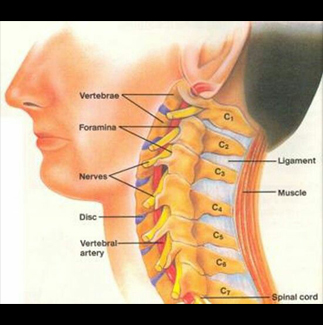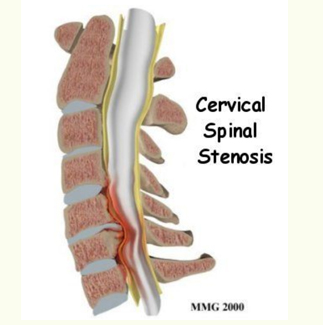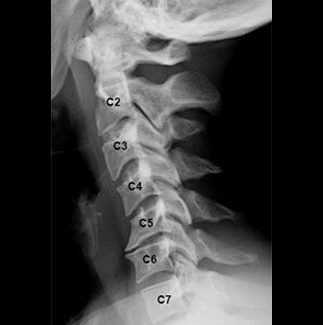

Chronic neck pain is a common condition and is perhaps second only to chronic low back pain as the most common musculoskeletal disorder associated with injury and disability claims. About two thirds of the population have neck pain at some time in their lives, and prevalence is highest in middle age. Most causes of neck pain are not serious though rarely it may be secondary to more serious condition.
Chronic neck pain – often referred to as cervical pain – can come from any structure located in the neck or near it, like degenerative disc disease, neck strain, whiplash, a herniated disc, or a pinched nerve.
Most patients who present with neck pain have ‘non-specific’ (simple) neck pain, where symptoms have a postural or mechanical basis.
Aetiological factors are poorly understood and are usually multifactorial, including poor posture, anxiety, depression, neck strain, and sporting or occupational activities.
Neck pain after whiplash injury also fits into this category, provided no bony injury or neurological deficit is present.
When mechanical factors are prominent, the condition is often referred to as ‘cervical spondylosis’, although the term is often applied to all non-specific neck pain.
Mechanical and degenerative factors are more likely to be present in chronic neck pain.
At least 10% of affected people develop chronic neck pain, although this figure is much higher in some studies. In some industries, neck related disorders account for as much time off work as low back pain.
SYMPTOMS SUGGESTING THE POTENTIAL FOR SIGNIFICANT DISEASE
AXIAL NECK PAIN SYNDROMES
Neck pain can arise from a variety of causes. Systemic diseases, such as rheumatoid arthritis, spondyloarthritis, polymyalgia rheumatica and bony metastases should be considered in appropriate patients. Degenerative changes are the most common etiology for axial neck pain, as described below.
Cervical DiscogenicPain
Cervical discogenic pain is probably the most common cause of neck pain. In contrast to patients with cervical disc herniations, cervical discogenic pain refers to derangement in the architecture of the disc that results in mechanical neck pain with or without features of inflammation. The degenerative process that occurs in the intervertebral disc is associated with an inability to effectively distribute pressures between the disc, vertebral endplates, and facet joints.
Axial pain is more severe than extremity pain in cervical discogenic pain. Extremity pain can occur, but is felt to result from somatic referral rather than spinal nerve root impingement. Symptoms are often exacerbated when the neck is held in one position for prolonged periods, such as occurs with driving, reading, or working at a computer. There is often associated muscle tightness and spasms.
Cervical degenerative disc disease is more aptly a radiologic diagnosis, rather than a clinical syndrome, as it is commonly seen on x-ray studies in both symptomatic and asymptomatic patients.
Cervical Facet Syndrome
The zygapophyseal joint, commonly referred to as the facet joint, can cause axial pain and is probably the most common cause of whiplash-related neck pain and headaches. Pain is often midline or offset slightly to one side. Symptoms can be somatically referred to the shoulders, periscapular region, occiput, or proximal limb. As with cervical discogenic pain, axial symptoms are greater than extremity symptoms.
Unfortunately, there is no specific historical examination, or imaging finding, that provides confirmatory diagnostic information. A fluoroscopically guided injection of local anesthetic to anesthetise the innervation of the joint (cervical medial branch blocks) resulting in pain relief is considered to be the definitive diagnostic test.
Cervical Myofascial Pain
Regional pain with associated trigger points, taut bands, and pressure sensitivity has been called myofascial pain. Myofascial pain can be a nonspecific manifestation of any pathologic condition that causes pain from the neck to the shoulder and should not be considered a defining diagnosis. Myofascial pain can also be associated with muscle sensitivity, depression, anxiety, insomnia, and may represent a less generalized variant of fibromyalgia.
Diffuse Skeletal Hyperostosis
Diffuse skeletal hyperostosis (DISH) is a syndrome of inappropriate bone deposition in the insertions of the ligaments and tendons. Large osteophytes connect adjacent vertebral bodies in a somewhat asymmetric fashion. The diagnosis is based on three criteria for spinal radiographs:
DISH can be associated with stiffness, loss of mobility, and pain, but can also often be asymptomatic. The bony fusion that results from the hyperostosis may cause mechanical pain at segments adjacent to the fused segments. Prominent anterior vertebral hyperostosis associated with DISH can cause dysphagia.
Cervical Radiculopathy
Cervical radiculopathy refers to dysfunction of the spinal nerve root that may manifest with pain, weakness, reflex changes, or sensory changes. Multiple conditions can give rise to cervical radiculopathy, including cervical foraminal stenosis, cervical herniated disc, herpes zoster and diabetic polyradiculopathy, but degenerative changes in the spine are overwhelmingly more common than the other causes, accounting for 70 to 90 percent of cases.
NON-SPINAL CAUSES OF NECK PAIN
1.Thoracic outlet syndrome
Thoracic outlet syndrome can present as neck and shoulder pain with referred pain to the upper extremities and variable neurovascular signs and symptoms. The triad of numbness, weakness, and a sensation of swelling of the upper limbs is strongly suggestive of thoracic outlet syndrome. Examination may demonstrate a positive Roos sign (repetitive and vigorous hand grip while the arms are abducted overhead) or a positive Adson’s test (diminution of the radial pulse when the arm is abducted, extended backward, the head is turned ipsilaterally and patient inspires)
IMAGING
Radiographic imaging is indicated in presence of ‘red flags’ or in patients with history of trauma.
The ‘Red flags’ include:
MRI and CT scans are more sensitive than plain films for identifying some serious conditions, including disc herniations, spinal cord compression, infection, and malignancy. MRI should be the first-line imaging study performed in patients with progressive signs or symptoms of neurologic disease. MRI should also be obtained if there is a suspicion for infection or malignancy. Some experts also believe that MRI is indicated for patients who have moderate to severe neck symptoms beyond six weeks, even if plain films are negative. In the absence of risk factors for serious disease, MRI imaging is not necessary in patients with mild neck pain.
PAIN MANAGEMENT PROTOCOL FOR CHRONIC NECK PAIN
PROCEDURES WE OFFER FOR NECK PAIN







